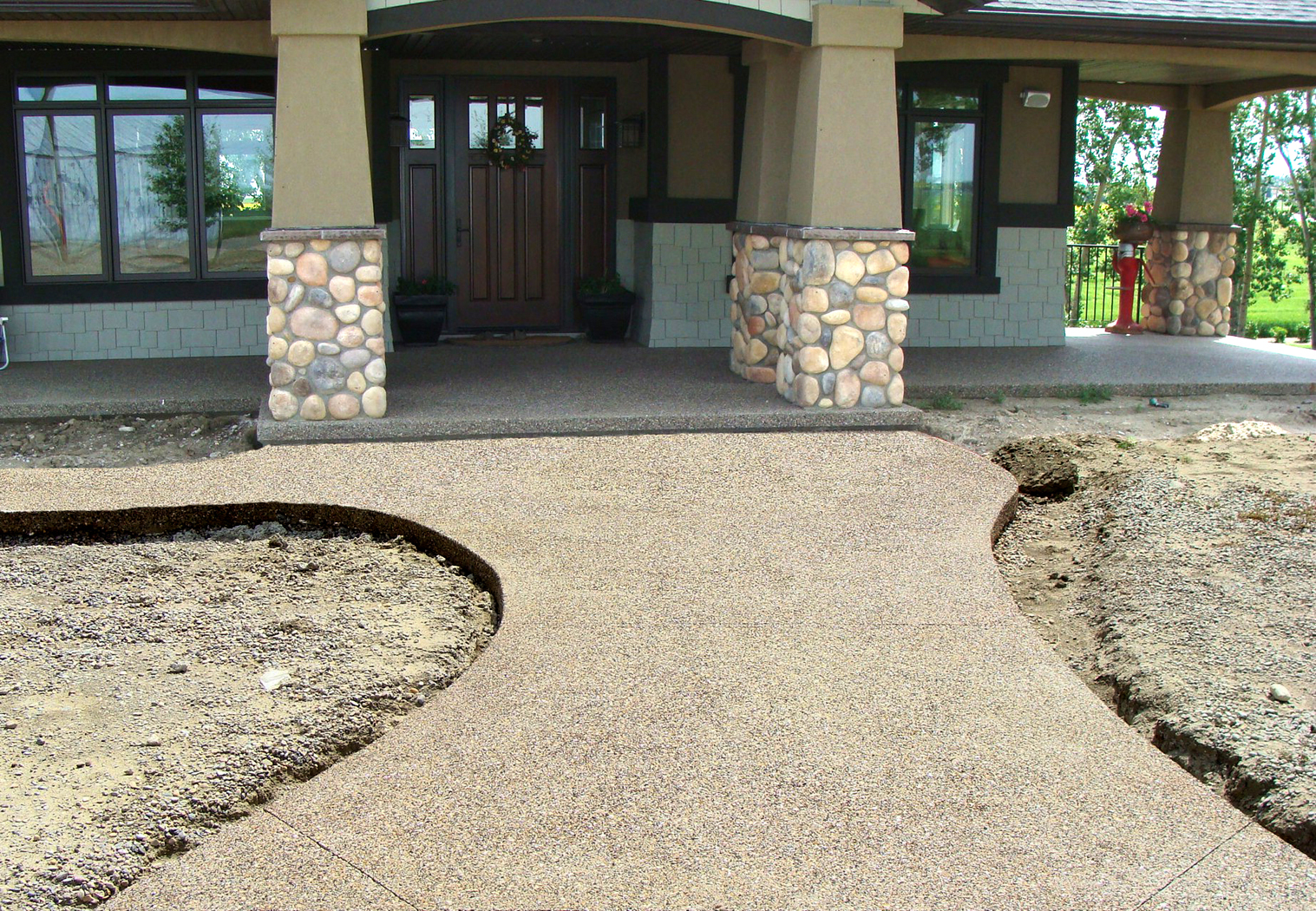5 Tips Exposed Aggregate Concrete

Exposed aggregate concrete has become a popular choice for outdoor spaces, driveways, and even interior flooring due to its unique aesthetic appeal and durability. The process of creating exposed aggregate concrete involves removing the top layer of the concrete to reveal the decorative aggregate beneath, such as pebbles, stones, or shells. This technique not only adds visual interest but also enhances the slip resistance of the surface, making it ideal for areas that are exposed to water or heavy foot traffic. However, achieving the perfect exposed aggregate finish requires careful planning, execution, and maintenance. Here are five tips to help you make the most out of your exposed aggregate concrete:
1. Selecting the Right Aggregate
The choice of aggregate is crucial as it directly influences the appearance and durability of the exposed aggregate concrete. The aggregate can range from small pebbles to larger stones and even recycled materials like glass. Consider the color, size, and texture of the aggregate in relation to your project’s aesthetic and functional requirements. For instance, smaller aggregates might be more suitable for high-traffic areas due to their better slip resistance, while larger stones can create a more dramatic, rustic look. Ensure that the aggregate is clean and free of dust before the concrete is poured, as this can affect the bonding and the final appearance.
2. Timing of the Exposing Process
The timing of when to expose the aggregate is critical. The exposing process, which involves washing away the cement paste to reveal the aggregate, should be done at the right stage of the concrete’s curing process. This is usually after the concrete has set sufficiently to hold its shape but before it has hardened too much. The exact timing can depend on the weather conditions, the mix of the concrete, and the specific method of exposure being used. Performing this step too early can lead to damage, while doing it too late might not effectively reveal the aggregate.
3. Methods of Exposure
There are different methods for exposing aggregate, including water washing, chemical etching, and abrasive blasting. Each method has its own advantages and considerations. Water washing, for example, is a common and relatively gentle method that involves spraying the concrete surface with water to remove the top layer. Chemical etching uses a mild acid to dissolve the cement paste, which can be effective but requires careful handling to avoid damaging the concrete or the aggregate. Abrasive blasting is another option, which uses compressed air to blast fine silica sand or other abrasives at the surface, but it must be used cautiously to avoid damaging the aggregate. The choice of method depends on the type of aggregate, the desired depth of exposure, and environmental considerations.
4. Sealing for Protection and Enhancement
After the aggregate has been exposed, applying a sealant is a crucial step for protecting the concrete and enhancing its appearance. A good sealant can protect the surface from stains, spills, and damage from UV rays, which can cause fading. There are different types of sealants available, including penetrating sealers, acrylic coatings, and polyurethane-based sealers, each offering varying levels of protection and sheen. The choice of sealant should be based on the intended use of the area, the desired level of gloss, and the need for specific protections such as resistance to oil stains or UV degradation.
5. Maintenance for Longevity
To ensure that your exposed aggregate concrete retains its beauty and durability over time, regular maintenance is essential. This includes periodic cleaning to remove dirt and debris, which can accumulate in the pits and crevices of the exposed aggregate. Avoid using harsh chemicals or abrasive cleaners that can damage the concrete or the aggregate. For stains, use targeted cleaning products appropriate for the type of stain (e.g., oil, grease, etc.). Reapplication of sealant may be necessary every few years, depending on wear and exposure to the elements, to maintain the protective barrier and aesthetic appeal.
In conclusion, exposed aggregate concrete offers a unique blend of form and function, making it an attractive option for a variety of applications. By carefully selecting the aggregate, timing the exposure process correctly, choosing the appropriate exposure method, applying a suitable sealant, and maintaining the surface, you can enjoy a beautiful, durable, and low-maintenance exterior or interior surface that stands the test of time.
How do I clean exposed aggregate concrete without damaging it?
+Cleaning exposed aggregate concrete requires care to avoid damaging the surface. Use a mild detergent and warm water. Avoid using acidic substances, ammonia, or bleach, as these can etch the concrete or damage the aggregate. For tough stains, consider using a cleaning product specifically designed for concrete, and always test a small, inconspicuous area first.
Can exposed aggregate concrete be used indoors?
+Yes, exposed aggregate concrete can be used indoors, offering a unique and durable flooring option. It can add a touch of industrial chic or natural beauty to interior spaces. However, it’s crucial to ensure the concrete is properly sealed to protect it from spills and stains, and to consider the slip resistance, especially in areas prone to moisture.
